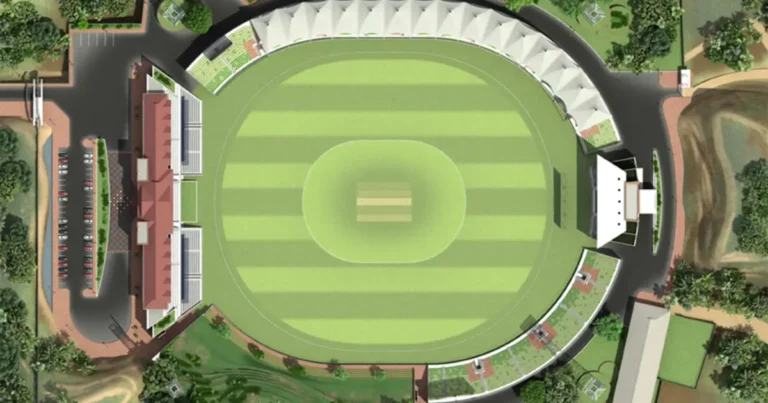How to Increase Your Golf Swing Speed: A Complete Guide
Increase your golf swing speed is one of the most effective ways to add distance to your drives and lower your scores. For many golfers, especially amateur players, insufficient swing speed is what holds them back from consistently hitting longer shots. The good news is that with some focused training and technique adjustments, it is possible for most golfers to gain clubhead speed and hit the ball farther without sacrificing accuracy or control along the way.
Benefits of Faster Swing Speeds
Increasing clubhead speed at impact leads to added carry distance and more overall yards off the tee or on longer shots. Even small improvements in mph can make a significant difference in how far you hit each club. More swing speed gives you more room for error and mishits as well. Other benefits include:
- Reach more par 5s in two shots
- Use shorter clubs into greens for approach shots
- Improve ability to hold greens with longer clubs
- Generate more spin and control with all iron shots
- Increase margin of error on mishits
- Create higher launch angles and trajectories
Any golfer looking to maximize distance capabilities and lower scores should make developing faster swing speeds a priority. With the right training and techniques, it is possible for most players to gain 3-5 mph or more.
Evaluating Your Current Swing Speed
Before making any changes, it is important to determine your current swing speeds and establish a baseline to improve upon. There are a few ways to measure clubhead speed:
Use a Launch Monitor or Doppler Radar
These high-tech options at golf courses, fitting centers, pro shops and some driving ranges can precisely measure swing speeds down to the exact mph. This data can be very useful for comparison over time.
Slow Motion Video Analysis
Using video from your smartphone or camera to capture your swing in slow motion makes it possible to visually count the frames it takes from the start of the swing to impact and estimate mph.
Calculate Based on Distance
While less precise, you can use your typical carry yardages with each club and mathematical calculators to estimate approximate swing speeds.
Once you have established your starting speed abilities, you can set tangible goals for improvement over time like 1-2 mph per month. It also gives you metrics to compare training methods against.
Flexibility and Warm Up Routines
Increasing flexibility and properly warming up the muscles central to the golf swing is critical for allowing your body to move more freely and generate faster clubhead speeds without increased injury risk or sacrificing mechanics.
Full body dynamic stretches before playing along with exercises targeting the core muscles and upper body help prepare the sequence of motions required in the swing. Be sure to heat up the muscles in short bursts prior to taking full speed swings as well.
Flexibility routines should focus on shoulders, torso rotation, wrists, and hips for golf. Yoga, light cardio routines, resistance bands, foam rollers and massage tools can all help increase range of motion over time.
Golf Strength and Conditioning
Building golf-specific strength, especially in the core muscles, shoulders, and hands/wrists aids swing speed in several key ways. Stronger muscles achieve faster speed with less effort, have greater stamina for consistent speeds, and can increase width for bigger turns.
Core and torso exercises improve both rotational speed and resistance to keep body coil longer through impact. Medicine balls, cable machines, resistance bands, planks, and Russian twists are excellent for core strength related to the golf swing.
Working grip and forearm strength lets the wrists hinge faster while keeping the club accelerating without breaking down. Squeezing exercisers, wrist curls, farmers carry walks build key muscle groups here.
Squats, lunges, presses, and deadlifts that target the quads, glutes, hips and abs are crucial for ground force transfer up the kinetic chain into clubhead speed as well. A certified trainer can recommend golf-specific routines.
Swing Technique and Sequence Adjustments
Making changes to your overall swing mechanics and sequence of motions is vital for enabling faster clubhead speed while maintaining control of accuracy. Key elements to focus on include:
Wider Backswing Arc and Turn
Increasing shoulder rotation and width of the backswing extends the possible arc and room to accelerate into the ball. Feel like you are reaching further back.
Retain Angles for Longer
Letting angles like wrist hinge and lag collapse too early bleeds out speed before impact. Hold angles as long as possible.
Sequence Hips and Upper Body
Generating power starts from the ground up. Fire the lower body to pull the arms and club rather than overly rushing the hands and arms.
Smooth Tempo with Faster Pace
Abrupt swings require more timing and often have a harder jerk right before impact. Smooth builds speed progressively.
Straighten Lead Leg Through Impact
Let the lead knee move towards the target as you shift weight left. This action boosts ground force transfer for more speed.
Ideal attack angles, low point control, and consistent face to path direction must be maintained as well while making any speed focused swing changes. You want to maximize mph behind the ball without losing accuracy.
Custom Fit Equipment for Swing Speeds
As you increase swing speeds, having clubs properly fit for length, weight, loft, and flex becomes critical to optimize performance gains and achieve ideal launch conditions. Heavier shafts, stiffer flexes, and lower lofts in woods may be needed.
Ideally, clubhead speed, angle of attack, and typical shot shapes should all be key inputs into a golf club fitting analysis. This results in gear that is not holding back speed capabilities while matching your unique swing tendencies for optimal flight.
Changes or gaps in swing speed abilities from one club to the next should also be considered in this analysis to get the incremental gaps and transitions correct as speed changes with each shorter club.
Training Aids for Swing Speed
A variety of training aids on the market can provide immediate feedback on clubhead speed, help groove proper swing sequences for generating more speed, and build the flexibility or strength needed to keep increasing speed limits.
Weighted clubs can build key muscles and tempo. Speed sticks instantly show clubhead velocity and can be addicting competition. Resistance bands attach to wrists while swinging for strength response. Stack-Tee drill develops ideal sequences through impact.
There are too many options to list here, but everything from video analysis apps, impact sensors, weighted donuts, speed radar devices, stretching sticks and more can accelerate skill development for faster clubhead speeds if used properly.
Importance of Ongoing Practice
While initial speed gains from equipment changes, strength building, and swing adjustments happen relatively quickly, continuing to increase swing speeds to reach maximum potential requires ongoing repetition and practice.
Hitting balls at the range with focus on technique elements for speed allows the motions to become second nature over time. Continually pushing pace in practice builds comfort at faster tempos as well.
Steady routine work against speed measuring devices provides addicting feedback on progression. Don’t just work speed from the range tee either – incorporate into range approach shots, short game swings, putting stroke pace as well.
Conclusion
The path to faster golf swing speeds is within reach for most players willing to put in targeted practice. Equipment choices, flexible strength training, swing adjustments, and use of speed-focused training aids all combine to drive impressive gains under the right plan.
With a comprehensive practice routine and some expert help dialing in new techniques, players can gain 3-5 mph or more in under a season. Remember to be patient through early changes as well until motions become second nature. The distance and scoring improvements from even 2 mph more speed are significant.
Stop leaving yards on the table and start taking advantage of all your naturally available power. Use these tips to begin evaluating your current status, setting tangible speed goals, and implementing the optimal plan for increasing golf swing speeds starting today. The total will speak for themselves in no time.







